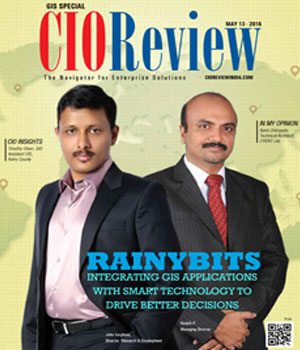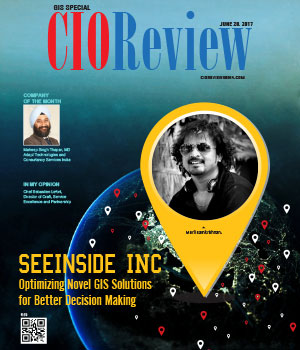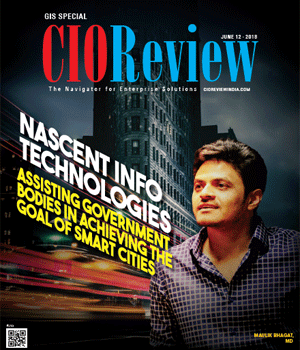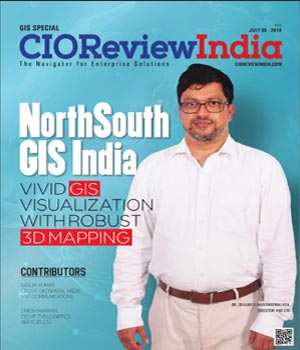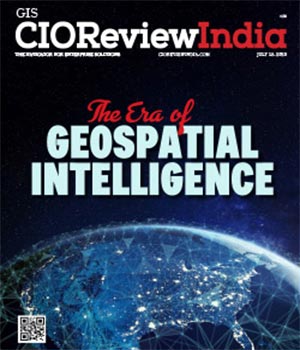
Understanding the Data behind the Data-the Next Leap for GIS Professionals
Timothy Oliver, GIO Assistant CIO, Horry County | Thursday, 26 May 2016, 05:35 IST
 Location, location, location is no longer just from the real estate perspective. As consumers, we want to know “what’s around me?” “Where can I get the best prices “or “what I want is in stock nearest me?” As service providers, where do my customers live, shop, or travel to? As government, where do my constituents live, the distribution of tax revenue vs. expenditures, the location of 911 calls. The list goes on, but the bottom line is…it is all about the WHERE.
Location, location, location is no longer just from the real estate perspective. As consumers, we want to know “what’s around me?” “Where can I get the best prices “or “what I want is in stock nearest me?” As service providers, where do my customers live, shop, or travel to? As government, where do my constituents live, the distribution of tax revenue vs. expenditures, the location of 911 calls. The list goes on, but the bottom line is…it is all about the WHERE.
The proliferation of GIS data along with Big Data has pushed GIS into the mainstream. GIS professionals have moved beyond the data creator/editor roles to more astute analyst roles, which includes linking, mashing and consuming then, visualizing, analyzing and telling the story starting at the map. The next great leap for GIS professionals is to understand the data behind the data. The responsibility moves beyond telling a compelling story or printing a cartographic masterpiece.
The challenge and future for CIO’s and GIS professionals is two-fold. The first challenge is to provide actionable information to decision makers and first responders (Police, EMT’s Disaster responders, insurance adjusters post disaster.) Actionable means more than dots on a map, but pertinent information based on the current/real time incident. Examples include first responders enroute to a commercial structure fire need to know potential hazardous chemical information not only on scene, but on the surrounding properties and potentially, evacuation of nearby critical facilities. They need all of this information before they arrive on scene. Or an insurance agent has access to the local government damage assessment data prior to arriving on scene post natural disaster such as a hurricane or earthquake. GIS professionals need to be able to provide actionable information real time to their customers. This means being able to understand from end users what is actionable information.
Actionable information in the private sector is just as critical as in the public sector. Rooftop counts have long been a basis for site selection. Now add demographic information, or building permit information to enhance the analysis. If insurance companies were provided with severe weather tracks, customers who have been affected by storms, and if they had access to damage assessments completed by local or federal agencies they could efficiently be prepared to deal with incoming claims. It’s not just having access to all the data, but making sure it is relevant.
The second challenge for the future is even more daunting. That is the ability to question the present and the future based on the past. Law enforcement, public health and mental health agencies will continue to be impacted in the future based on events of the recent past. If knowledge of the geographic data was incorporated into systems and analyzed, would the decisions or outcomes be affected? Some examples:
• Is there a relationship between 911 calls for service relating to domestic violence as a precursor to property values? Domestic violence incidents increase in distressed neighborhoods before delinquent taxes, before foreclosures. Which then in turn lead to property value declines when primary residences become rental units, which may foreshadow future areas of increased crime and need for revitalization. Could understanding of this cause/effect relationship alter the timing or type of assistance provided by communities? Either way, there is an increased potential cost that will be born by the communities.
• From a mental health standpoint, would there be value in knowing that a current resident of Texas or Florida had lived in Louisiana or coastal Mississippi in 2005? If, at the time of completing a patient history, previous addresses were geocoded and related to tragedies (Katrina, Columbine, Boston Marathon Bombing) could that information enhance the treatment process or provide critical background information?
Additionally, while we understand to some degree the relevance of the past to the present and future, we need be visionary to current events and question the potential societal changes and be prepared for the results.
• The legalization of marijuana in a number of states will have what future impacts? Proponents put forth estimates on employment, tax revenues and potentially a boom in population growth in the states where it is now legal. The challenge is to assess what is or what will be the impact to border states? Using Colorado as an example, what will be the impact to Wyoming, Nebraska, Kansas, Oklahoma, and New Mexico. In these border states what, if any, will be the impact to unemployment, traffic stops or truancy. These border states may now have issues to address, but will not have access to the increased revenue stream as Colorado, to pay for the situations that may arise.
CIOs must embrace the technology of GIS. It should no longer be that stepchild in some other department(s) that consumes bandwidth from standalone servers. It is not just a planners tool kit or a local government toolset. The benefits of the data should open discussions on access to that data. Somewhere in most every organization GIS exists and as Chief Information Officers remember it is geographic INFORMATION. CIO’s are faced with security issues, mobility, virtual, cloud, hardware, software refresh and rapidly changing technology requirements of business units within the organization. In most organizations CIOs, (depending on organization size and complexities) are supported by CISO’s, Infrastructure Managers, Line of Business support engineers, programmers, and help desk support. As part of the cadre of professionals, CIOs should be supported by a GIO, Geographic Information Officer.
Organizations that take this approach will find themselves positioned to provide their businesses the most powerful tools available, to not only sustain business today, but be prepared for the future. A visionary team of CIO and GIO together can take an organization into the next generation.
CIO Viewpoint
The Manifold Applications of Vehicle Tracking...
By By Satrajit Bhattacharya, Head-IT, Future Group
Geographic Information Systems - A Vital Part...
By Dan Ryan, CIO, City of Battle Creek, Michigan
Make GIS More of a Strategic Tool in Your...
By Mujib Lodhi, CIO, Washington Suburban Sanitary Commission (WSSC)
CXO Insights
By Manoj Kumar Nambiar, Managing Director, Arohan Financial Services (P) Limited
Teleradiology - Using Information Technology to...
By Arjun Kalyanpur, Founder, Teleradiology Solutions
Get YourDigital Cocktail Right


